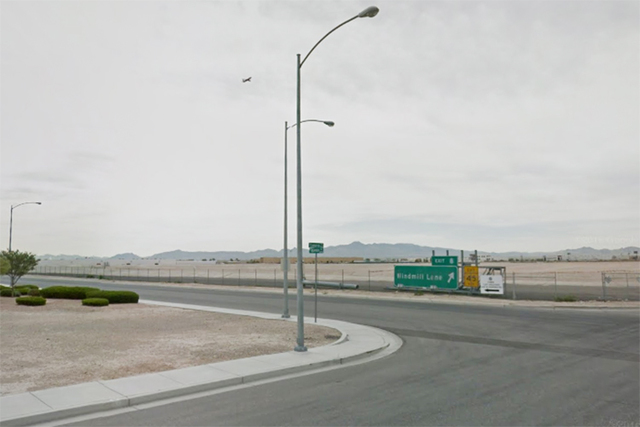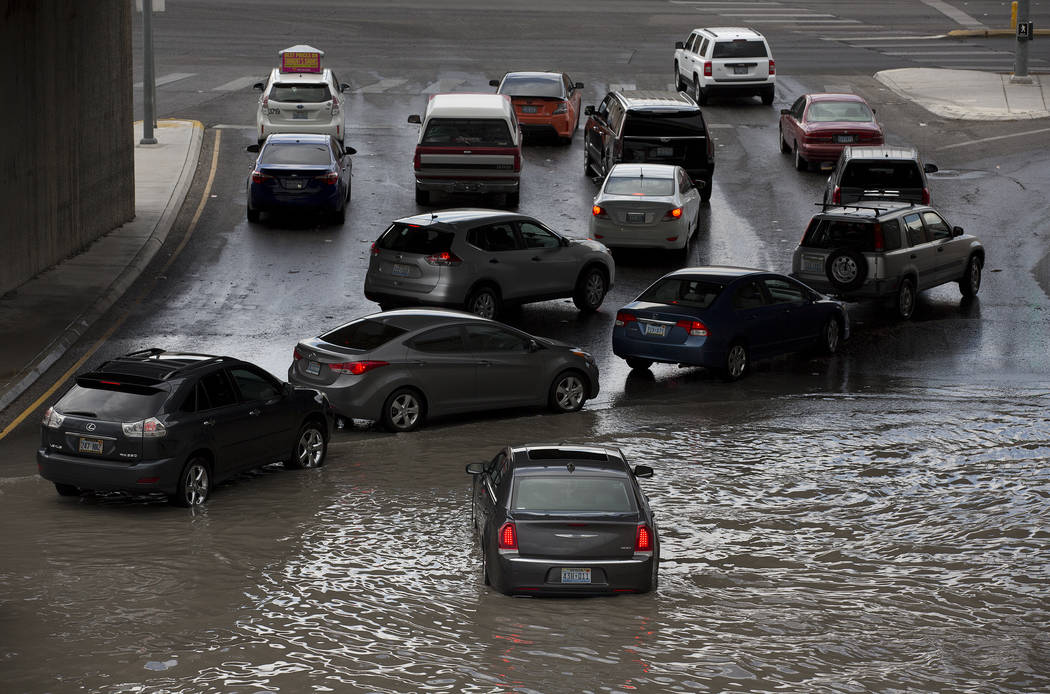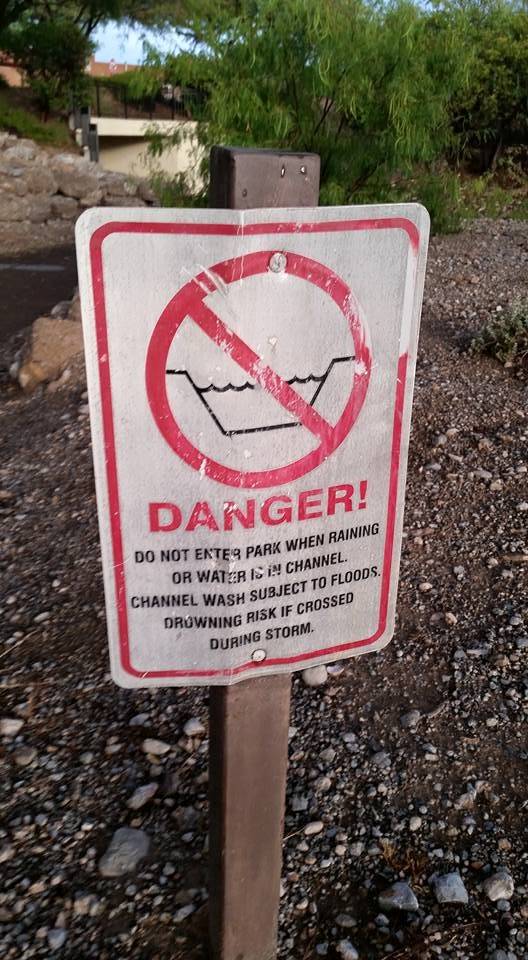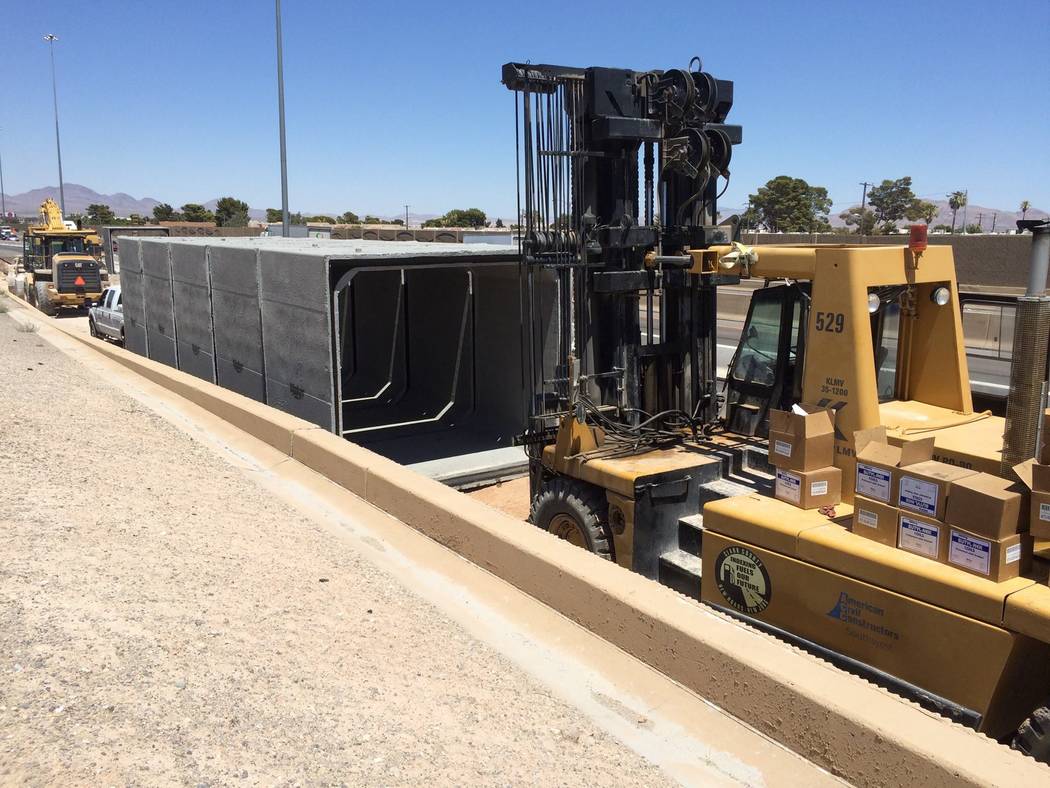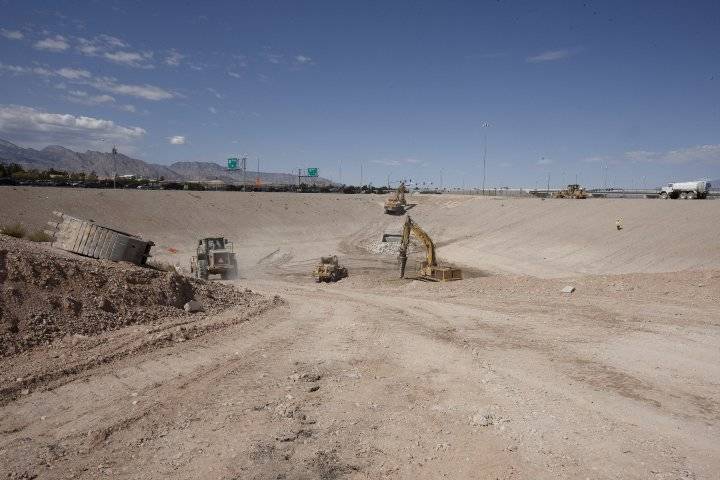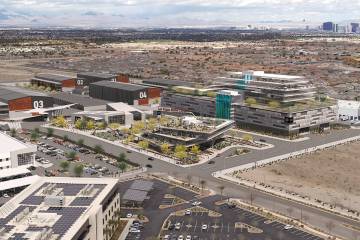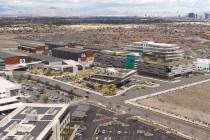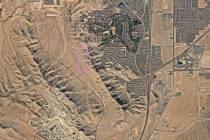Flood-control project set to begin in southwest Las Vegas; two more in 2018
It may not rain often in Las Vegas, but when it does, it pours.
Because of the dry ground and increasing amounts of pavement as the city develops, water collects quickly, increasing the potential for flash floods that can lead to vehicle crashes, damage to homes and businesses and even cause death.
Thunderstorms unleashed chaos on the northwest valley this summer, carrying debris into roadways and clogging streets. The southwest has seen less flooding activity, but the Clark County Regional Flood Control District continues to work on several projects designed to divert water away from homes and businesses and into storm drains and channels.
The first project is located where Duck Creek intersects with Dean Martin Drive, near Cactus Avenue. This month, contractors will begin putting 14-by-6-foot concrete box culverts under the road to direct water to other parts of the flood control district’s system.
The project will cost about $3.8 million and is expected to take six months.
“In some areas near Duck Creek … the water wants to get into Duck Creek and flow into basins and channels. But we need to get it controlled,” said district spokeswoman Erin Neff. “The way we’ve designed things, the water runs down some streets in some areas. If we have heavy storms, there is some localized street flooding in some areas.”
Neff said two more projects likely will begin next year; both are in conjunction with the Regional Transportation Commission.
More channels and culverts will be installed at the intersection of Duck Creek and Haven Street, as well as at the intersection of Duck Creek and Jones Boulevard. Both projects are still being developed and will come up for funding approval from the district’s board in October.
The Haven project likely will receive $4 million in flood control funding, while the Jones project likely will receive about $1.7 million, Neff said. Design consultants have been hired for both projects, Neff said, but the details of the work could change before construction begins in 2018.
In a few years the district is set to construct a 170-acre detention basin south of Silverado Ranch Boulevard and west of Arville Street, according to the district’s fiscal planning documents. The project is estimated to cost $22 million and includes several box culverts, outlet pipes and open channel improvements. Design and cost might change, according to district spokeswoman Beatriz Martinez.
The area is largely undeveloped and experiences a lot of flooding, Martinez said, making it a good candidate for a new detention basin. Detention basins not only provide a place for water to go, but they help slow down fast-moving water as it exits the city.
But there are a lot of moving parts that make estimating cost for projects like these difficult.
“A lot of times we can’t put the cost on it because there might be new development that affects the cost,” Martinez said. “Things (in the southwest valley) literally change every day. The growth is so drastic. There’s new developments popping up weekly: That’s why we don’t have a lot of details.”
Since the district’s inception in 1985, it has removed nearly 19 square miles of flood zone from the southwest valley through the construction of channels, culverts and detention basins. It has removed 54 square miles of flood zone in all of Clark County. That helps save residents money on flood insurance, Neff said.
“If you’re not in a flood zone, you can generally get flood insurance for about a buck a day,” she said. “When you’re in a flood zone, however, you are at the market’s whim because now you’re in a position where you must buy it.”
The district’s system is about 75 complete. Still to come: 34 more detention basins and approximately 205 more miles of channels and underground storm drains. The remaining work is estimated to take 25 years.
“As we continue to complete these facilities, different things could happen to make that stretch out,” Neff said. “Climate change could create the need for different-sized facilities … We might find we need to do more maintenance on older facilities. It’s definitely a moving target.”
Contact Madelyn Reese at mreese@viewnews.com or 702-383-0497. Follow @MadelynGReese on Twitter.
Flooding facts
There have been 21 separate flash flood events in Clark County since 1960, and 32 flood-related deaths in Clark County during that time.
There is a 25 percent chance of a flood during the life of a 30-year mortgage.
Between 20 and 25 percent of all flood insurance claims are paid to people living outside a high-risk flood area.
Flood insurance polices are available through most insurance companies, but it takes a minimum of 30 days for a flood insurance policy to take effect.
Clark County Regional Flood Control District




